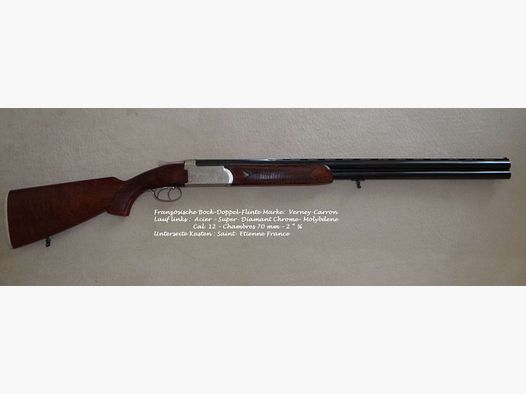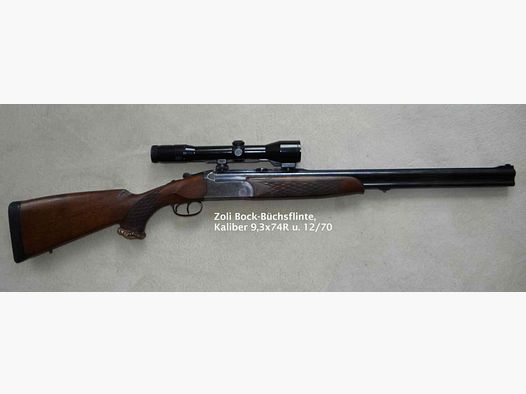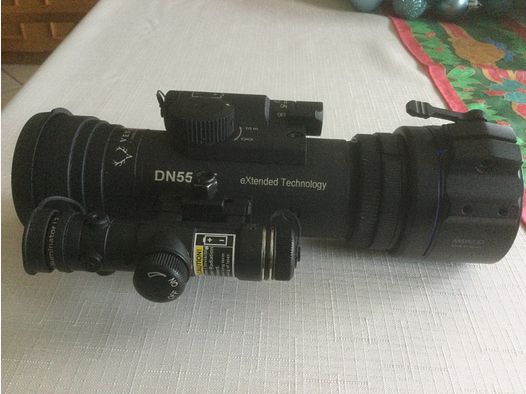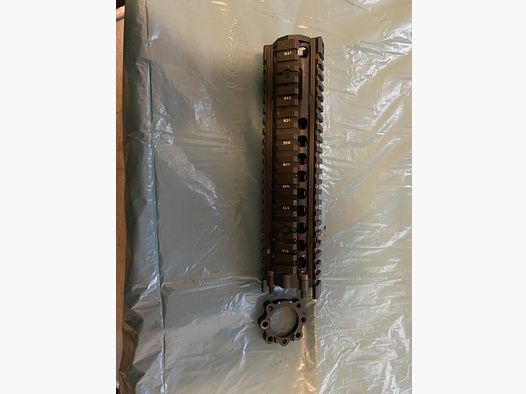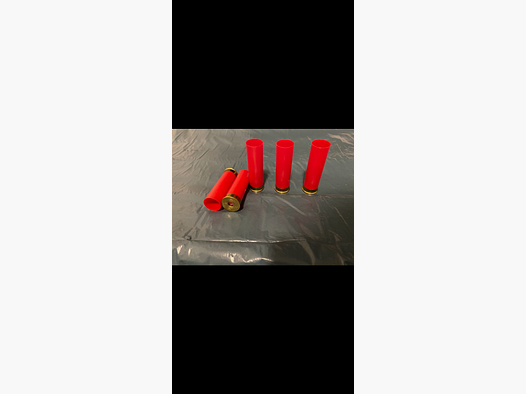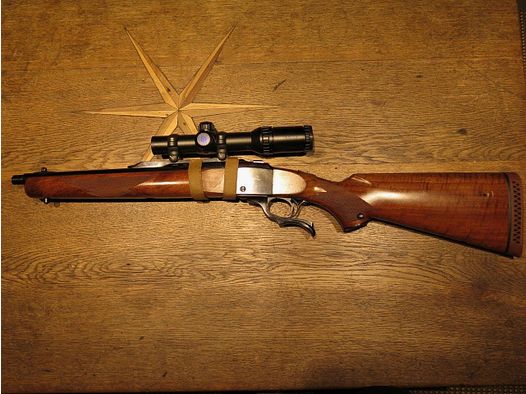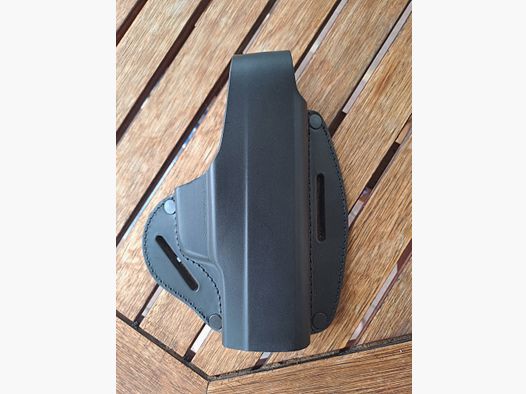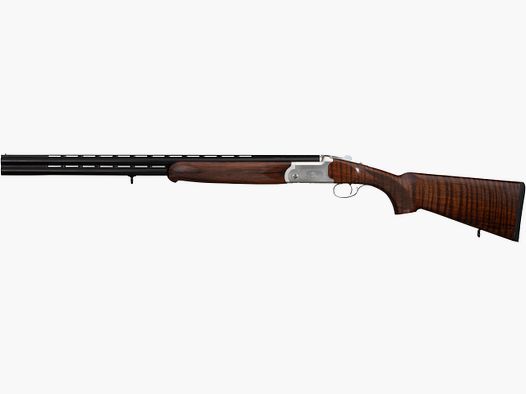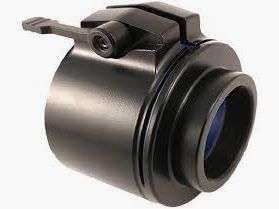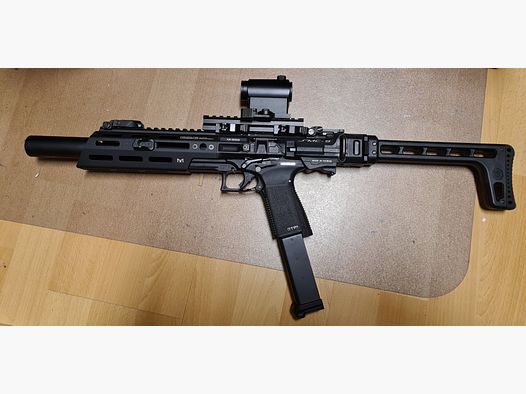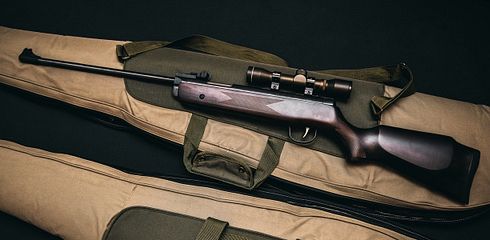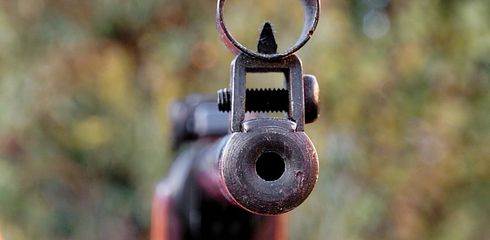Partial Disintegration Bullet
Partial disintegration bullets are designed to disintegrate in a controlled manner down to a defined residual body.
Example double-core bullet: This partial disintegration bullet always retains a residual mass of 60%. A partial jacket bullet like the cone tip bullet or the TM bullet from the ammunition manufacturer RWS also belongs to the partial disintegrators, with the residual body varying slightly depending on target resistance and bullet speed.
The principle of operation of this bullet type is based on massive organic destruction through the controlled release of bullet fragments and the defined residual body. The suction effect of the residual body ensures that the fragments of the front core mostly leave the game body.
Deformation Bullet
The deformation bullet mushrooms upon impact with the game body and remains mass-stable. It is designed to lose very little weight in the game body.
Example Evolution: The effect is primarily achieved through the cross-sectional enlargement of the uniformly mushrooming bullet and the constant weight.
Advantages and Disadvantages!
As with almost all questions surrounding the topic of ammunition, the question of bullet type is also wildly discussed in hunting groups on social networks and forums. Everyone believes they have chosen the only correct bullet type. But here, as so often, the truth lies somewhere in the middle.
Which bullet type should be used primarily depends on the caliber used, the distance the bullet is supposed to cover, the weapon used, the loading, the point of impact, and not least the type of game being hunted and the desired effect in the game body.
Some of these factors are framed by legal regulations. There are regulations stating that certain game animals may only be hunted with cartridges that transfer a certain energy at 100m, 200m, and 300m. Generally, the energy of the bullet primarily depends on the caliber of the cartridge.
An example: If one shoots a weak fawn at 80m with a cartridge in .300 Winchester Magnum caliber and hits the heart, the fawn - regardless of whether one has chosen a partial disintegrator or a deformation bullet - will likely be down in the shot. However, the game meat in the front half of the animal will also be hardly usable. This caliber cartridge delivers nearly 4000 Joules to the target at 100m with a weight of about 160-190grs. A cartridge of caliber 6.5 x 57, on the other hand, delivers only about half the energy, around ~2000 J, to the target at 100m.
Now, the extent of game meat destruction in this case is still very much dependent on the point of impact because:
If the bullets hit bone (here the heart), more energy is naturally released upon collision with this resistance. If the bullets (of any type) were to hit behind the heart between two ribs, the resistance would be lower, and less energy would act in the game body. Understanding the content of this small excursion is essential to grasp the following fact:
The partial disintegration bullet works well in terms of quick killing and game meat preservation when it hits with little resistance in the game body before the organs. If the resistance is too strong at or shortly after first contact with the game body (for example, the full heart of a mature boar), the fragments separating from the core may not work properly because they get stuck in the fragments of the heart and thus cannot reach and destroy the organs. In this case, the core is also reduced in mass and has less remaining "destructive power." With partial disintegrators, it can therefore be advantageous to produce so-called kitchen shots behind the heart, as the initial resistance is low, but the fragments can then destroy the lung extensively through their spread and escape from the game body due to the suction of the core.
The deformation bullet remains mostly mass-stable when penetrating the game body and is supposed to "tear" a "hole" in the game body and the vital organs. These bullets are also often referred to as "stoppers" by hunters. They release a lot of energy upon impact with sufficient resistance on the game body and often knock the animal down with force. However, with this bullet type, there is a risk: if the bullet hits too little resistance and therefore does not mushroom sufficiently and does not release enough energy, it may initially leave too little damage in the game body.
One could now run through the scenarios of all possible points of impact for both bullet types and always suspect slight differences with advantages and disadvantages. However, it seems much more sensible to note that one should always think about which distances with which caliber one primarily hunts which game species and what the usual point of impact looks like. Because the advantages and disadvantages of which loading of which bullet type ultimately depend very much on one's own experience and also on how one personally assesses the effect in the game body. One person prefers to take away a bit more game meat and has still had every animal down in the shot, while another goes another 80m with the dog and produces a kitchen shot according to their feeling.
It is important in ammunition selection to adhere to legal regulations and to always plan the hunt in such a way that the animal is brought down cleanly and ethically.



